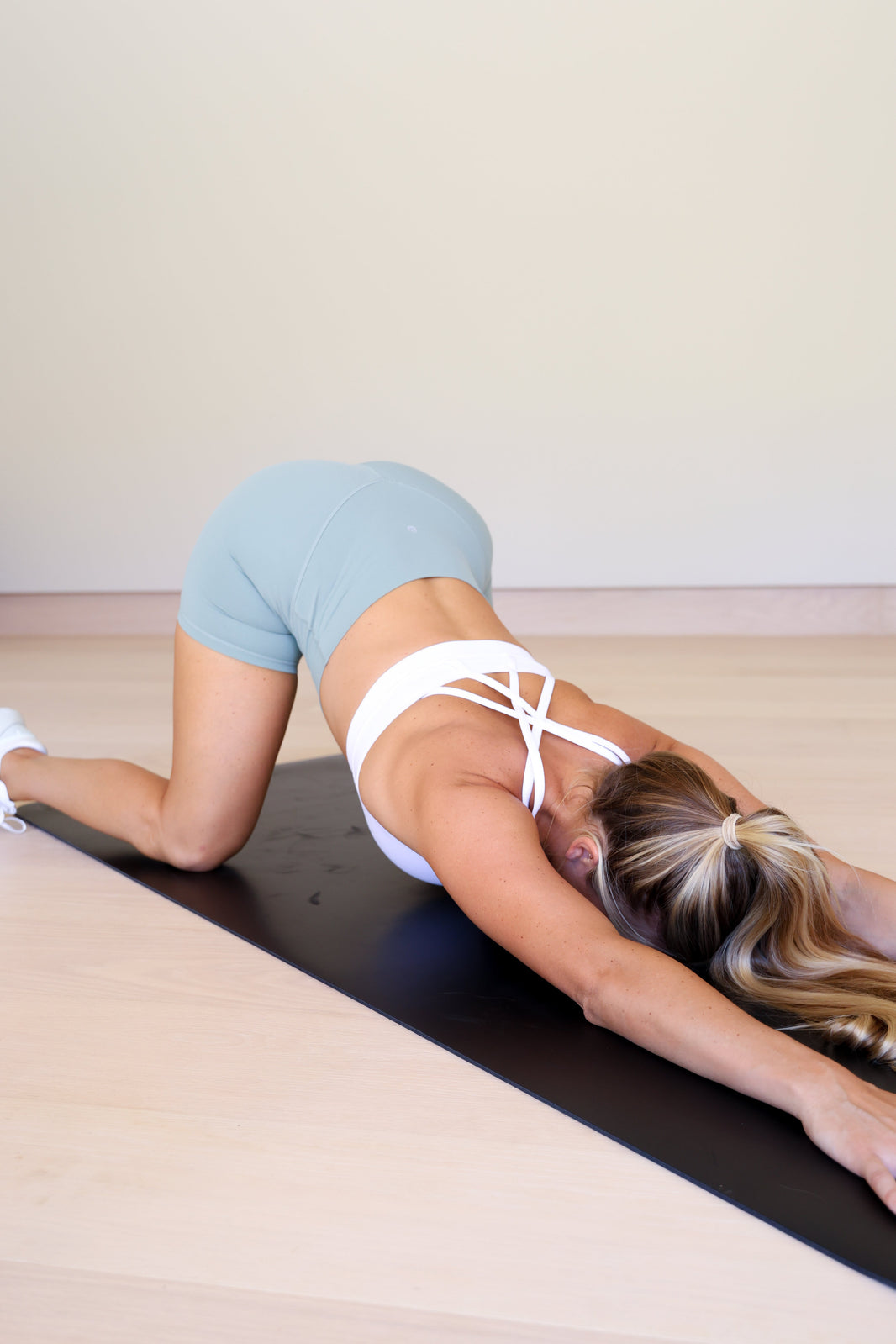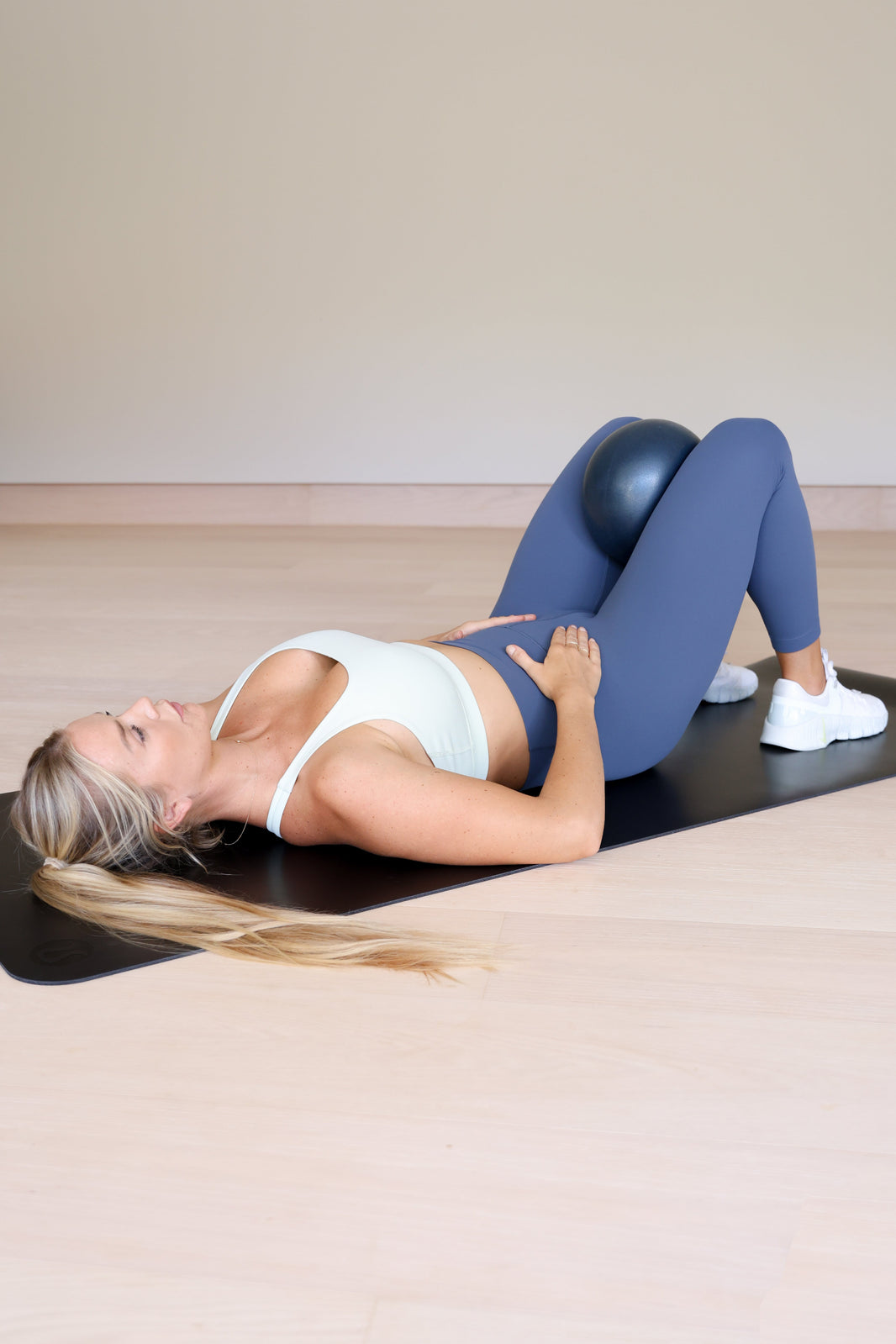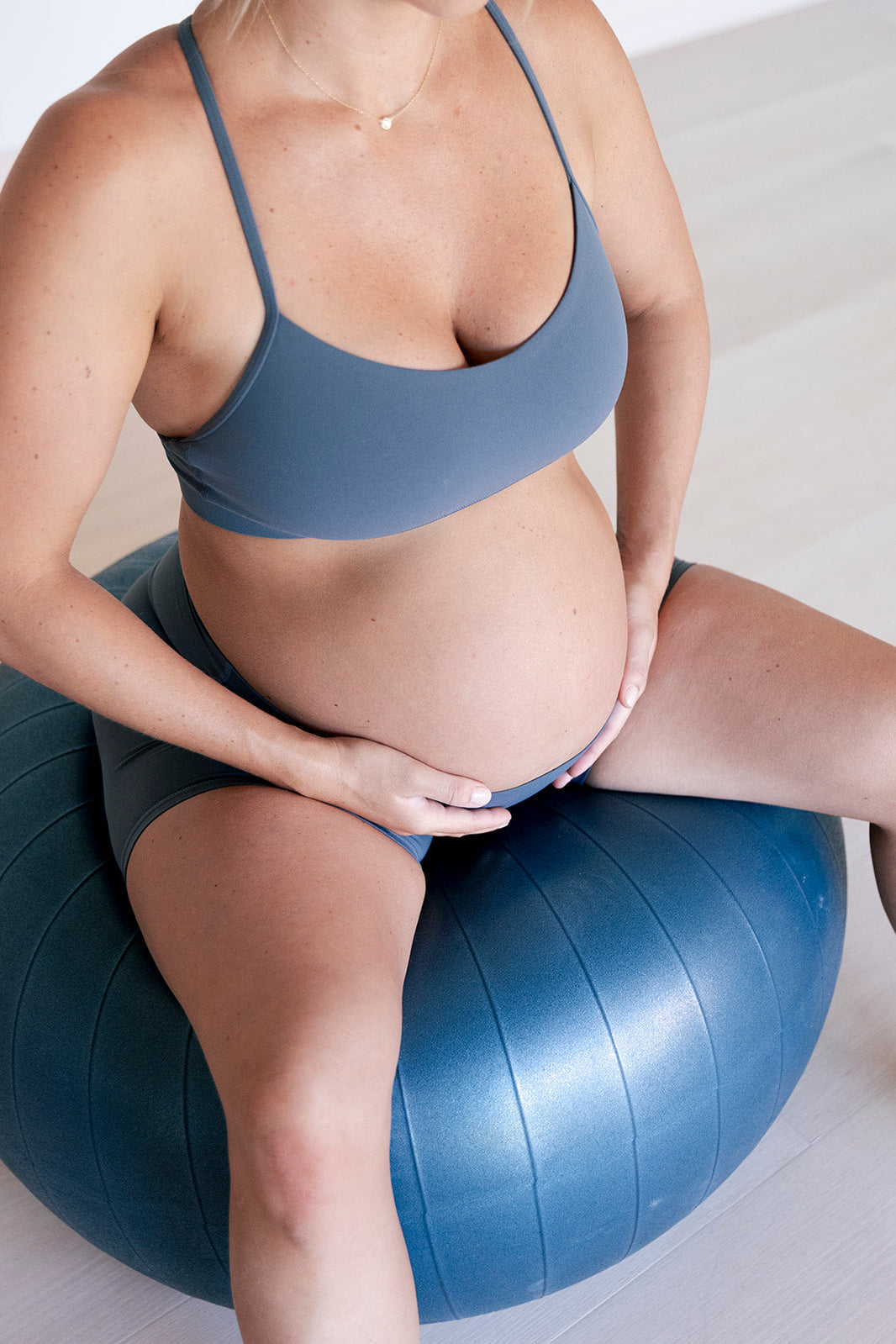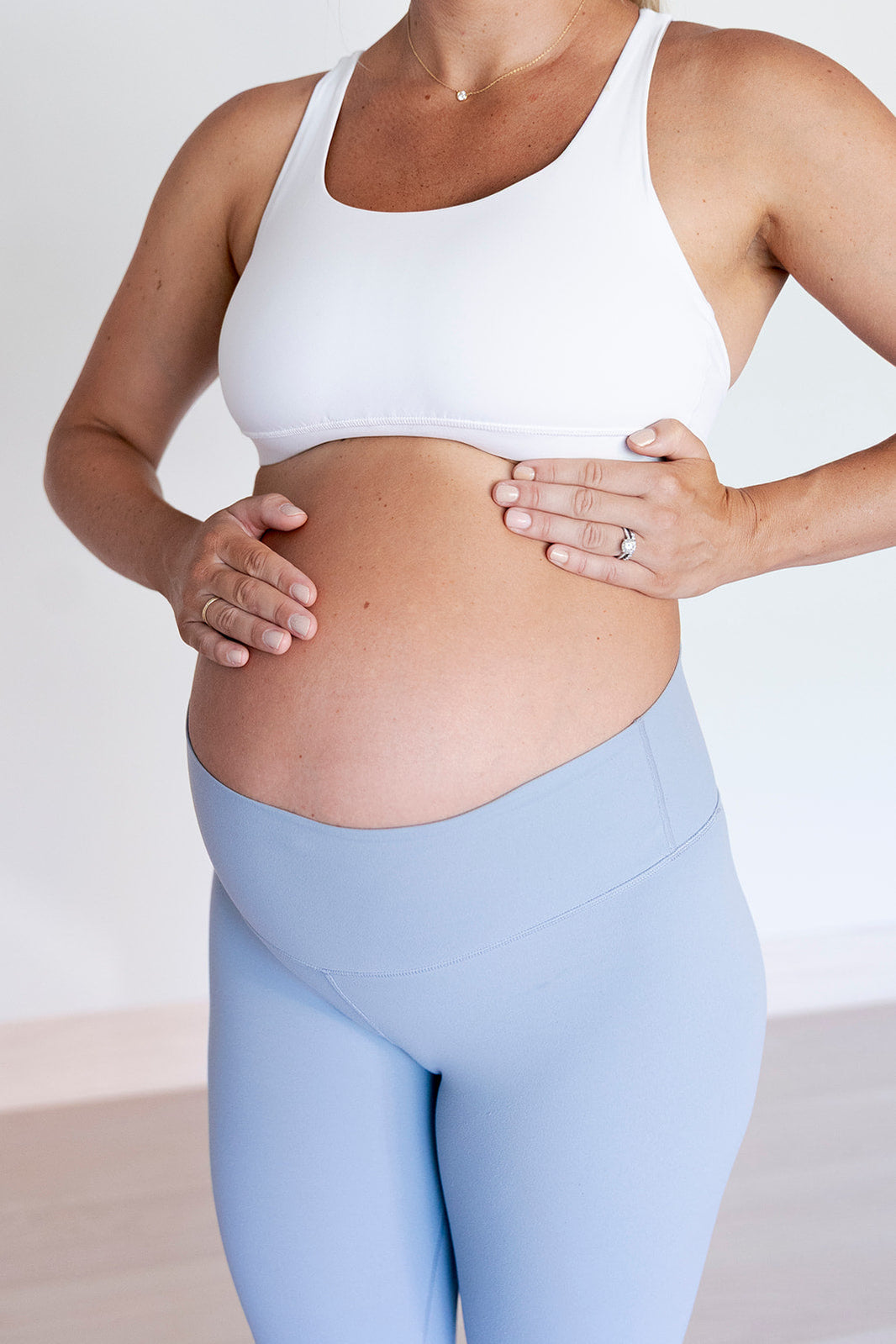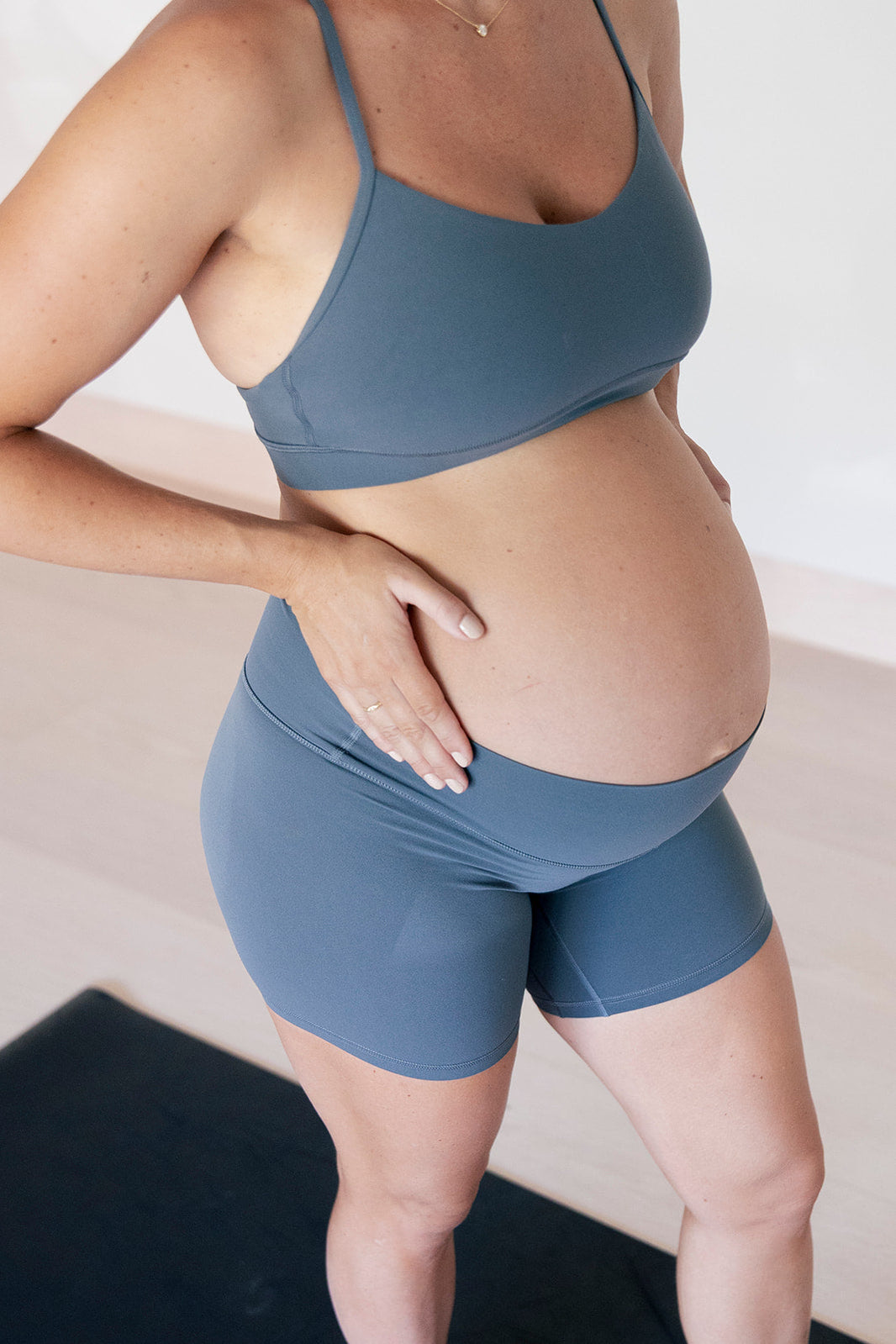If you’re newly postpartum and have heard the word prolapse, chances are it brought on a wave of worry. Maybe you Googled it and now feel overwhelmed—or maybe you’ve felt something that doesn’t feel quite right in your body and are wondering what it means. I’m here to tell you: take a deep breath. You are not broken, and prolapse is not something to fear.
Prolapse is actually very common postpartum. In fact, it’s almost expected to have a small degree of it—especially in the first few months after giving birth. It’s not a failure or a diagnosis to fear; it’s simply one way your body is communicating what it’s been through and what it needs as it heals.
Let’s start by understanding what prolapse actually is. Simply put, prolapse happens when one or more of your pelvic organs—like your bladder, uterus, or rectum—shifts slightly downward and begins to press into the vaginal wall. This can sound scary, but it’s important to understand that these shifts are happening in soft tissue that’s still healing, reorganizing, and recalibrating after carrying and delivering a baby. This process is heavily influenced by the hormone shifts that are still happening in our body postpartum, the stretched and lengthened state of our pelvic floor and abdominal tissues from pregnancy and birth, and the slow process of uterine involution—your uterus returning to its pre-pregnancy size.
Let’s talk the The 4 Stages of Prolapse:
Not all prolapse is created equal—and the grade doesn’t always match the severity of symptoms. Here’s a simple breakdown of the four stages:
Grade 1 (Mild):
Pelvic organ has slightly lowered but remains high within the vaginal canal. Often no symptoms or very minimal awareness. This is the most common type seen postpartum and often resolves with time and support.
Grade 2 (Moderate):
Organ has descended closer to the vaginal opening, just to the vaginal opening, and 1 cm outside of the vaginal opening. May feel a heaviness or dragging sensation, especially after long periods of standing or activity. Still very treatable with rehab and often improves with postpartum healing.
Grade 3 (More Severe):
The organs are more than 1 cm below the vaginal opening and are visible or felt externally. Usually comes with more pronounced symptoms and requires more structured intervention.
Grade 4 (Severe):
The organ is completely outside of the vaginal opening. This is rare and typically managed with surgery.
Most postpartum mommas fall into Grade 1 or 2—and with time, movement, and intentional recovery, these can improve significantly. Prolapse doesn’t always announce itself dramatically. Some people are diagnosed through a physical exam and never knew they had it. Others feel symptoms and worry something is seriously wrong.
Common signs of prolapse include a sensation of heaviness or dragging in the lower pelvis, a bulge or pressure in the vaginal area (especially at the end of the day), difficulty fully emptying the bladder or bowels, and sometimes bladder leakage. You may feel like something is “falling out” or sitting low. These sensations can fluctuate day to day and are often worse when standing or active for long periods.
So if you're noticing any of this, what can you do? First and foremost, know that you are not stuck. You are in a healing phase—and there are so many ways to support your body as it rebuilds.
Step 1 in Recovery: Pelvic Rest and Symptom Management
Before you jump into strengthening, the first priority is helping your body feel supported. This early phase is about reducing pressure on the pelvic floor and creating space for healing.
Use pelvic rest with elevation strategies to manage symptoms like heaviness, bulging, or pressure:
Bottom-elevated supine rest
Lie on your back with your hips supported by a pillow or yoga bolster or block. Rest your legs on a couch, chair, or ottoman to elevate your feet and reduce downward force.
Inverted child’s pose
Knees wide and on a pillow, arms extended forward. This helps shift pressure away from the pelvis and can feel relieving after a long day on your feet.
Side-lying with 360° breathing
Lie on your side with knees bent and a pillow between your knees. Inhale into your ribs laterally and back, exhale and let your body soften. Helps regulate pressure and calm your nervous system.
Bottom-elevated happy baby
On your back, gently grab behind your thighs or calves. Keep hips slightly propped up on a small pillow to allow pelvic organs to decompress. Try to spend 10–15 minutes a day in one of these positions—especially in the afternoon or evening when symptoms are more noticeable.
Step 2: Pressure Management
Your core and pelvic floor are part of a pressure system. Managing that pressure helps prevent symptoms from getting worse and sets the stage for healing.
Here’s how to manage pressure from the inside out:
Practice reflexive pelvic floor engagement:
Before you cough, sneeze, or lift something: Lightly lift your pelvic floor (as if stopping gas and urine) and hold throughout. This pre-activates the pelvic floor to protect against downward pressure.
Coordinate breath with movement:
Inhale to prepare. Exhale through the exertion (like standing up, lifting your baby, or squatting). Avoid breath holding or pushing down—this increases strain on the pelvic floor.
Postural awareness:
Work on keeping equal weight shift between your toes and heels and stacking your rib cage over your pelvis. Collapsing into the pelvis or slumping can increase pressure in the wrong places.
Movement pacing:
Take breaks when needed. Avoid long stretches of standing or walking if symptoms increase. Your endurance will return—give yourself permission to pause.
Step 3: Support Regular, Easy Bowel Movements
Constipation and straining are common postpartum, but they can make prolapse symptoms worse. Let’s make bowel movements gentle and easy on your healing body:
Magnesium citrate or glycinate: (consult with your provider). Helps soften stool and promote regularity.
High-fiber foods or fiber supplementation: Aim for 25–35g of fiber daily from fruits, veggies, seeds, and whole grains.
Plenty of hydration: Half your body weight in ounces of water is a good goal, maybe more with breast feeding
Squatty potty or foot stool: Elevate your feet to bring your knees above your hips when pooping—this reduces the need to push.
Colon massage: Gently massage your belly in a clockwise direction to stimulate movement and relieve bloating.
Step 4: Build Strength and Reconnect to Your Core System
Your pelvic floor is part of a larger team that includes your diaphragm, deep abdominals, glutes, and hips. Healing prolapse means helping this team work together again—gradually and progressively.
Start with low-load, gravity-assisted exercises, then slowly build up as symptoms improve and coordination returns.
Early rehab movements:
- Heel slides
- Supine core breathing with light pelvic floor engagement
- Gentle bridges
- Side-lying clamshells
Next-level progressions (once symptoms are stable):
- Sit to stands with pelvic brace coordination
- Quadruped fire hydrants
- Wall sits with inner thigh (ball) squeeze for overflow activation
Advanced, functional movements (when ready):
- Squats with pelvic brace, gradually picking up weight
- Step-ups with single leg balance
- Lunges with pelvic brace coordination
The key is gradually building up difficulty in movement, working on breath, and how your body feels. If symptoms worsen, modify or scale back. That’s not a failure—it’s typically a fatigue level of your pelvic floor muscles
Be Smart with Lifting and Movement
It’s not about avoiding movement—it’s about smart movement.
- Exhale and engage when lifting baby, standing from a chair, or doing any effortful movement.
- Avoid breath-holding or straining, especially if you feel symptoms afterward.
- Use good body mechanics—bend from the hips and knees, keep the load close to your body, and stay balanced.
- Adjust your activity based on symptoms—some days you may need more support or rest.
If you take one thing away from this guide, let it be this: prolapse postpartum is common, treatable, and not something to fear.
Your body has done something incredible—and just like with any big transformation, it takes time to recalibrate.
Here’s what I want you to remember:
Symptoms do not always equal severity. A momma with a grade 2 prolapse may feel zero symptoms, while another with a grade 1 might feel more pressure depending on the day, position, or time of day. We treat the person, not just the grade.
Your prolapse can improve. With time, smart movement, and targeted rehab, symptoms can lessen and tissue support can improve.
Overly thinking about and stressing about your prolapse can worsen your symptoms—prolapse symptoms typically happen due to hypersensitivity around your perineum to the pressure changes happening. Blowing past them without breaks in this early postpartum period can cause more sensitivity in these tissues and overly worrying about them will only worsen this too.
Avoiding strength training can worse these issues for you later in life- avoiding strengthening can create more weakness for you and research studies have shown that women who are lifting less than 35 lbs later in life are more likely to experience higher levels of prolapse and prolapse symptoms.
You don’t have to navigate this alone. Seeing a skilled pelvic floor physical therapist—especially one who performs internal assessments—can make a world of difference. We can help you understand your baseline, guide your recovery plan, and support your goals—whether that’s chasing toddlers, surfing, lifting weights, or just feeling like you again.
You are not fragile. You are powerful. And with the right support, you can feel strong, capable, and confident in your postpartum body again.
Let’s take it one breath, one rep, and one empowering step at a time.




